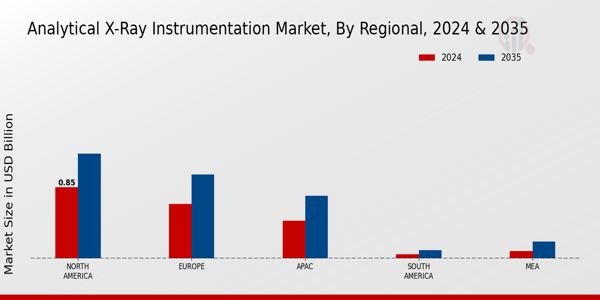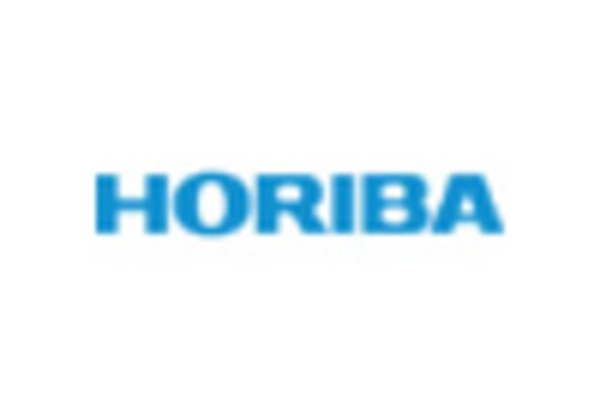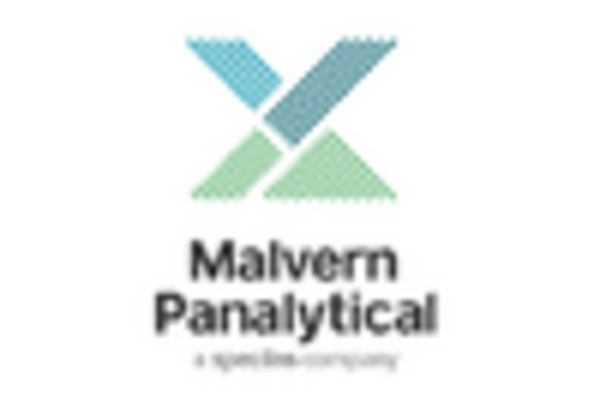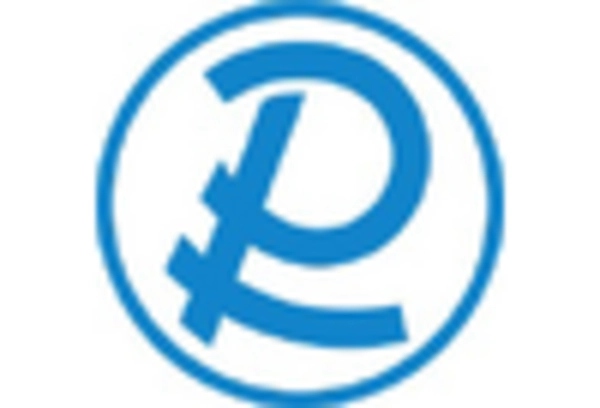Increased Regulatory Compliance
The Analytical X-Ray Instrumentation Market is significantly influenced by the rising need for regulatory compliance across various sectors. Industries such as healthcare, pharmaceuticals, and manufacturing are subject to stringent regulations that necessitate the use of reliable analytical instruments for quality control and safety assessments. Compliance with these regulations not only ensures product safety but also enhances operational efficiency. As regulatory bodies continue to tighten standards, the demand for advanced analytical X-ray instrumentation is expected to increase. This trend is likely to propel market growth, as companies invest in state-of-the-art equipment to meet compliance requirements and avoid potential penalties.
Growing Applications in Healthcare
The Analytical X-Ray Instrumentation Market is expanding due to the growing applications of X-ray technology in healthcare. Medical imaging, particularly in diagnostics and treatment planning, relies heavily on advanced X-ray instrumentation. The increasing prevalence of chronic diseases and the aging population are driving the demand for precise diagnostic tools. Furthermore, innovations in X-ray technology, such as portable and low-dose systems, are enhancing accessibility and safety in medical settings. As healthcare providers seek to improve patient outcomes through accurate diagnostics, the market for analytical X-ray instrumentation is expected to experience significant growth, reflecting the critical role of these instruments in modern medicine.
Emerging Markets and Economic Growth
The Analytical X-Ray Instrumentation Market is poised for growth due to emerging markets and overall economic development. Countries with expanding industrial sectors, particularly in Asia and Latin America, are increasingly investing in advanced analytical technologies. This investment is driven by the need for quality assurance and enhanced production processes in industries such as manufacturing, electronics, and food safety. As these economies continue to grow, the demand for analytical X-ray instrumentation is likely to rise, presenting opportunities for manufacturers and suppliers. The expansion of these markets indicates a promising future for the analytical X-ray instrumentation sector, as businesses seek to adopt cutting-edge technologies to remain competitive.
Rising Demand in Research and Development
The Analytical X-Ray Instrumentation Market is witnessing a notable increase in demand driven by research and development activities across various sectors. Academic institutions and research organizations are increasingly utilizing X-ray instrumentation for material characterization, structural analysis, and other scientific inquiries. The growing emphasis on innovation and the development of new materials, particularly in nanotechnology and biotechnology, is propelling the need for advanced analytical tools. Market data suggests that the R&D sector accounts for a substantial portion of the overall market share, indicating a robust growth trajectory. This trend underscores the critical role of analytical X-ray instrumentation in facilitating groundbreaking research and technological advancements.
Technological Advancements in Analytical X-Ray Instrumentation
The Analytical X-Ray Instrumentation Market is experiencing a surge in technological advancements, which are enhancing the capabilities and applications of X-ray instruments. Innovations such as high-resolution detectors and advanced imaging techniques are enabling more precise analysis in various fields, including materials science and pharmaceuticals. The integration of artificial intelligence and machine learning into X-ray systems is also streamlining data analysis, making it faster and more accurate. As a result, the market is projected to grow at a compound annual growth rate of approximately 6.5% over the next five years, driven by these technological improvements. This trend indicates a shift towards more sophisticated analytical tools that can meet the evolving demands of researchers and industries alike.


















Leave a Comment